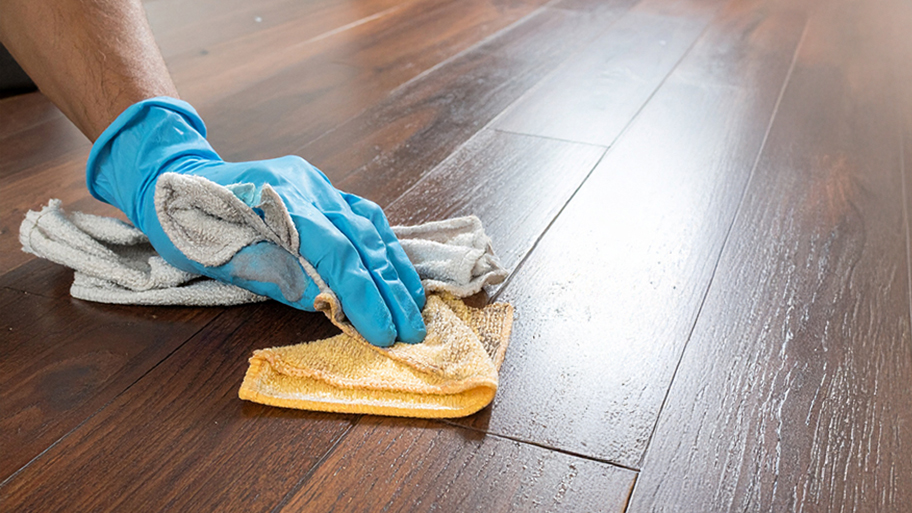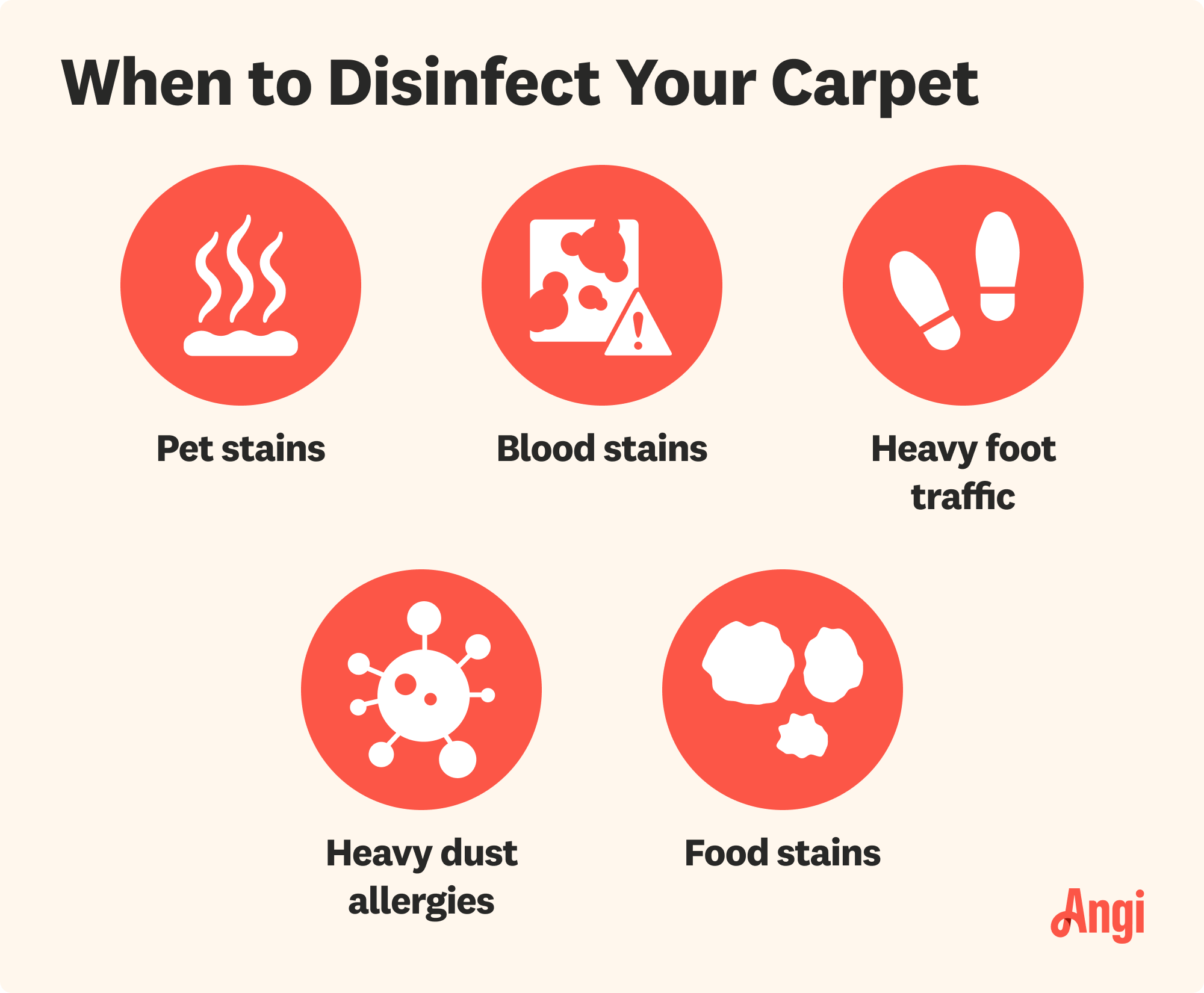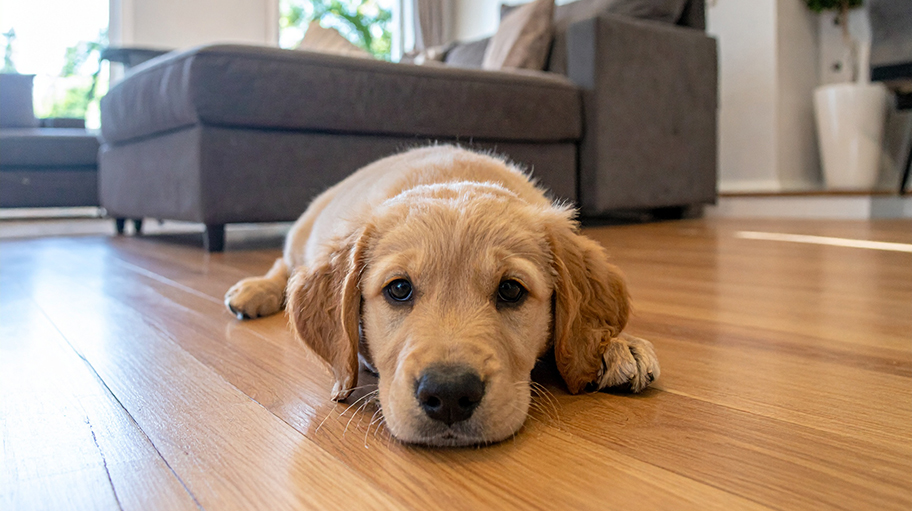
Here’s how to get paint off of wood floors, no matter what type of paint it is or just how much of it you need to remove.
Free your fibers of filth


Carpet feels great underfoot, but it can trap dirt, allergens, and odors. While regular cleaning is important, true disinfection isn’t realistic. Instead, focus on sanitizing to reduce germs to safe levels. Here's how to do it yourself and when to call in a pro.

Move as much furniture as you can off of the carpet. Place a small piece of plastic under each leg of any piece of furniture you cannot move to prevent rust or wood varnish from staining the carpet while it's damp.
Set your vacuum to the appropriate height for your carpet pile, turn it on, and slowly drag it back and forth across the entire carpet to pick up as much debris as possible. Vacuum even where there isn't visible soil. If you can still hear particles entering the vacuum, go over the entire room multiple times to ensure you don't miss anything.

Follow the manufacturer's instructions for your steam cleaner. You may need to mix your cleaning solution before adding it to the appliance. Ensure that you move slowly and cover the entire carpet.
Allow your carpet to air dry fully for at least eight hours. Don't allow foot traffic on the carpet during the drying process. If foot traffic is unavoidable, lay heavy towels down for people to walk on. Remove these towels while the carpet dries overnight. You can run fans to circulate air and accelerate the drying process.
Keeping your carpets truly clean takes more than just vacuuming—disinfecting them properly means avoiding a few common (and costly) mistakes. If you’re still unsure of how to approach, hiring a pro will keep mistakes from occurring.
Don’t skip vacuuming first: Disinfecting without removing dirt and debris reduces effectiveness.
Avoid over-wetting the carpet: Excess moisture can lead to mold and mildew growth.
Use the right disinfectant: Not all cleaners kill germs; look for EPA-registered carpet-safe disinfectants.
Test in a small area first: Some disinfectants can discolor or damage carpet fibers.
Rinse thoroughly if required: Some products leave residue that attracts more dirt if not removed.
Let it dry completely: Walking on damp carpet can spread bacteria and damage fibers.
Keep it clean in between: You can reduce contamination levels in between cleaning. To keep carpets cleaner longer, use washable mats at entryways, have everyone remove shoes, vacuum often, bathe pets regularly or keep them off carpets, and use cleaning tools correctly to avoid fiber damage.

Carpet cleaning should be a part of your regular household cleaning routine.
Vacuum multiple times a week to remove debris or daily if you have a crawling child.
Deep clean twice per year or seasonally, depending on accumulated dirt levels.
Deep clean more frequently if someone in your household has a compromised immune system, severe allergies, or an infectious disease.
To deep clean, you'll need to select a cleaning solution. While many carpet cleaners break down stains and soil for removal, they don't necessarily sanitize. Instead, look for an EPA-approved cleaner that contains sanitizing ingredients.
The average cost to hire a house cleaner or professional carpet cleaning service is $175 per visit. Professional carpet cleaning costs between $120 and $240, depending on the surface area. DIYing this job means renting a steam cleaner for about $100 per day and spending another $15 to $25 for detergent.
While hiring a house cleaner will save you the cost of equipment, they will add up over time. The real savings that come from hiring a local house cleaner will be your time and energy. If you have no mobility concerns and feel up to the task, DIY carpet cleaning is often a simple job you can accomplish independently.
From average costs to expert advice, get all the answers you need to get your job done.

Here’s how to get paint off of wood floors, no matter what type of paint it is or just how much of it you need to remove.

Steam cleaning keeps floors spotless, but not all flooring materials are compatible with steam. Use this guide to know when (and when not) to steam clean vinyl floors.

Steam cleaning is effective on certain kinds of tile floors. Read our guide to learn the ins and outs of steam cleaning and see if it’s suitable for your floor.

Disinfecting floors means ensuring they’re clean and that you’ve killed any harmful germs left on the surface. Learn how to disinfect hardwood floors in a few simple steps.

Don’t stress about dog urine (and the smell) ruining hardwood floors. Read about different DIY and natural methods for removing pet urine from hardwood floors.

Keep your bathrooms and kitchens looking their best by learning how to clean floor tile grout in this complete guide.